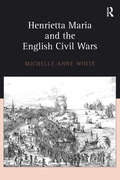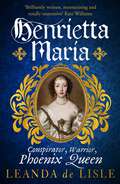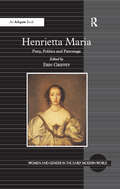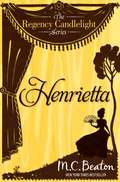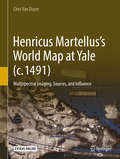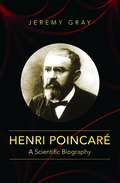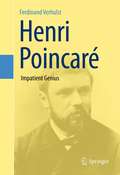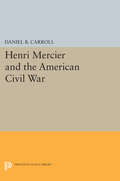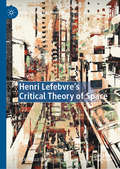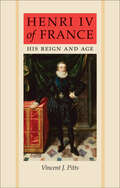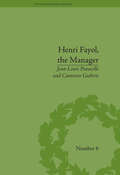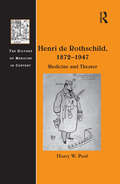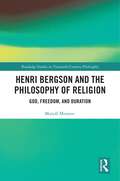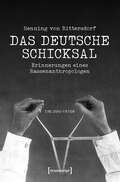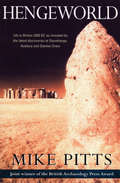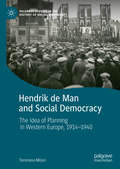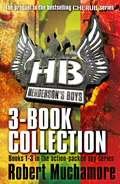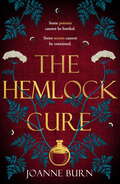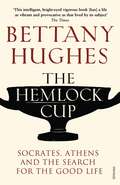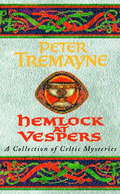- Table View
- List View
Henrietta Maria and the English Civil Wars
by Michelle WhiteThe influence exercised by Queen Henrietta Maria over her husband Charles I during the English Civil Wars, has long been a subject of interest. To many of her contemporaries, especially those sympathetic to Parliament, her French origins and Catholic beliefs meant that she was regarded with great suspicion. Later historians picking up on this, have spent much time arguing over her political role and the degree to which she could influence the decisions of her husband. What has not been so thoroughly investigated, however, are issues surrounding the popular perceptions of the Queen that inspired the plethora of pamphlets, newsbooks and broadsides. Although most of these documents are polemical propaganda devices that tell us little about the actual power wielded by Henrietta Maria, they do throw much light on how contemporaries viewed the King and Queen, and their relationship. The picture created by Charles and Henrietta's enemies was one of a royal household in patriarchal disorder. The Queen was characterized as an overly assertive, unduly influential, foreign, Catholic queen consort, whilst Charles was portrayed as a submissive and weak husband. Such an image had wide political ramifications, resulting in accusations that Charles was unfit to rule, and thus helping to justify Parliamentary resistance to the monarch. Because Charles had permitted his Catholic wife to interfere in state matters he stood accused of threatening the patriarchal order upon which all of society rested, and of imperilling the Church of England. In this book Michelle White tackles these dual issues of Henrietta's actual and perceived influence, and how this was portrayed in popular print by those sympathetic and hostile to her cause. In so doing she presents a vivid portrait of a strong willed woman who had a profound influence on the course of English history.
Henrietta Maria: Conspirator, Warrior, Phoenix Queen
by Leanda de LisleA myth-busting biography of Henrietta Maria, wife of Charles I, which retells the dramatic story of the civil war from her perspectiveA TIMES BOOK OF THE YEARSHORTLISTED FOR THE ELIZABETH LONGFORD PRIZEHenrietta Maria, Charles I's queen, is the most reviled consort in British history. Condemned as the 'Popish brat of France' and a 'notorious whore', she remains in popular memory the woman who turned the king Catholic - so causing a civil war - and a cruel and bigoted mother.Leanda de Lisle unpicks these myths to reveal a very different queen. We meet a new bride who enjoyed annoying her uptight husband, who was a passionate advocate for the female voice in public affairs and who, when civil war came, proved crucial to Charles's campaign. The image of the Restoration queen as an irrelevant crone is replaced with Henrietta Maria as an influential 'phoenix queen'. It is time to look again at this despised queen and judge if she is not in fact one of our most remarkable.'Brilliantly written, mesmerising, superb scholarship and totally immersive... A total game changer' KATE WILLIAMS, author of Rival Queens'This is revisionist history at its absolute best' ANDREW ROBERTS author of Churchill'Beautifully written and endlessly fascinating' ALEXANDER LARMAN author of The Crown in Crisis'Popular history of the finest kind' RONALD HUTTON author of The Witch
Henrietta Maria: Piety, Politics and Patronage (Women and Gender in the Early Modern World)
by Erin GriffeyCompiled by art historians, literary scholars, musicologists, and historians, this essay collection is an innovative and interdisciplinary study of Queen Henrietta Maria and her multi-faceted roles and responsibilities. Elements of the queen's popular biography - her European identity and devout Catholic faith - are only a part of the backdrop against which Henrietta Maria is re-considered. Drawing on the expertise of an international group of scholars from different disciplines, these essays explore and shed new light on the Queen's various roles: a patron of performing and visual arts with taste and influence comparable to her husband's, her salient political position between the French and English courts, and her political sentiments at the outbreak of the English Civil War. Through cutting-edge archival research that includes investigations into household accounts and personal correspondence, this collection ultimately presents a new assessment of female power and influence at the early modern court. What becomes strikingly evident is that Henrietta Maria had a distinct and profound influence on material and political culture that deserves the attention of art history, literature, theatre, and musicology scholars.
Henrietta Maria: Piety, Politics and Patronage (Women and Gender in the Early Modern World)
by Erin GriffeyCompiled by art historians, literary scholars, musicologists, and historians, this essay collection is an innovative and interdisciplinary study of Queen Henrietta Maria and her multi-faceted roles and responsibilities. Elements of the queen's popular biography - her European identity and devout Catholic faith - are only a part of the backdrop against which Henrietta Maria is re-considered. Drawing on the expertise of an international group of scholars from different disciplines, these essays explore and shed new light on the Queen's various roles: a patron of performing and visual arts with taste and influence comparable to her husband's, her salient political position between the French and English courts, and her political sentiments at the outbreak of the English Civil War. Through cutting-edge archival research that includes investigations into household accounts and personal correspondence, this collection ultimately presents a new assessment of female power and influence at the early modern court. What becomes strikingly evident is that Henrietta Maria had a distinct and profound influence on material and political culture that deserves the attention of art history, literature, theatre, and musicology scholars.
Henrietta: Regency Candlelight 2 (Regency Candlelight #2)
by M.C. BeatonThe second book in M.C. Beaton's charming Regency Candlelight trilogy. Even the inhabitants of secluded Nethercote looked pityingly upon young Henrietta, the Vicar's sister; her plain features seemed to almost guarantee her a solitary future. And yet, she had a determined spirit and magnificent hazel eyes. So when her Great-Aunt Hester left her unexpected wealth, Henrietta set out to conquer London's glittering high society and confound them all. But the fashionable elite was less than warm in its reception, especially when the newcomer, this bold minx, made clear her intention of winning the heart of one of society's most treasured gems: the irresistible, extravagant, heart-stopping Lord Beau Reckford, a prize wildly beyond her humble origins.The heroines of the Regency Candlelight Series set out to conquer London's glittering high society and marriage mart. These headstrong women cannot help but keep London society dangling on a string, but will they find a husband or lose themselves in the game?'Romance fans are in for a treat' - Booklist'[M. C. Beaton] is the best of the Regency writers' - Kirkus Reviews
Henricus Martellus’s World Map at Yale: Multispectral Imaging, Sources, and Influence (c. #1491)
by Chet Van DuzerThis book presents groundbreaking new research on a fifteenth-century world map by Henricus Martellus, c. 1491, now at Yale. The importance of the map had long been suspected, but it was essentially unstudiable because the texts on it had faded to illegibility. Multispectral imaging of the map, performed with NEH support in 2014, rendered its texts legible for the first time, leading to renewed study of the map by the author. This volume provides transcriptions, translations, and commentary on the Latin texts on the map, particularly their sources, as well as the place names in several regions. This leads to a demonstration of a very close relationship between the Martellus map and Martin Waldseemüller’s famous map of 1507. One of the most exciting discoveries on the map is in the hinterlands of southern Africa. The information there comes from African sources; the map is thus a unique and supremely important document regarding African cartography in the fifteenth century. This book is essential reading for digital humanitarians and historians of cartography.
Henri Poincaré: A Scientific Biography
by Jeremy GrayHenri Poincaré (1854-1912) was not just one of the most inventive, versatile, and productive mathematicians of all time--he was also a leading physicist who almost won a Nobel Prize for physics and a prominent philosopher of science whose fresh and surprising essays are still in print a century later. The first in-depth and comprehensive look at his many accomplishments, Henri Poincaré explores all the fields that Poincaré touched, the debates sparked by his original investigations, and how his discoveries still contribute to society today. Math historian Jeremy Gray shows that Poincaré's influence was wide-ranging and permanent. His novel interpretation of non-Euclidean geometry challenged contemporary ideas about space, stirred heated discussion, and led to flourishing research. His work in topology began the modern study of the subject, recently highlighted by the successful resolution of the famous Poincaré conjecture. And Poincaré's reformulation of celestial mechanics and discovery of chaotic motion started the modern theory of dynamical systems. In physics, his insights on the Lorentz group preceded Einstein's, and he was the first to indicate that space and time might be fundamentally atomic. Poincaré the public intellectual did not shy away from scientific controversy, and he defended mathematics against the attacks of logicians such as Bertrand Russell, opposed the views of Catholic apologists, and served as an expert witness in probability for the notorious Dreyfus case that polarized France. Richly informed by letters and documents, Henri Poincaré demonstrates how one man's work revolutionized math, science, and the greater world.
Henri Poincaré: A Scientific Biography
by Jeremy GrayA comprehensive look at the mathematics, physics, and philosophy of Henri PoincaréHenri Poincaré (1854–1912) was not just one of the most inventive, versatile, and productive mathematicians of all time—he was also a leading physicist who almost won a Nobel Prize for physics and a prominent philosopher of science whose fresh and surprising essays are still in print a century later. The first in-depth and comprehensive look at his many accomplishments, Henri Poincaré explores all the fields that Poincaré touched, the debates sparked by his original investigations, and how his discoveries still contribute to society today.Math historian Jeremy Gray shows that Poincaré's influence was wide-ranging and permanent. His novel interpretation of non-Euclidean geometry challenged contemporary ideas about space, stirred heated discussion, and led to flourishing research. His work in topology began the modern study of the subject, recently highlighted by the successful resolution of the famous Poincaré conjecture. And Poincaré's reformulation of celestial mechanics and discovery of chaotic motion started the modern theory of dynamical systems. In physics, his insights on the Lorentz group preceded Einstein's, and he was the first to indicate that space and time might be fundamentally atomic. Poincaré the public intellectual did not shy away from scientific controversy, and he defended mathematics against the attacks of logicians such as Bertrand Russell, opposed the views of Catholic apologists, and served as an expert witness in probability for the notorious Dreyfus case that polarized France.Richly informed by letters and documents, Henri Poincaré demonstrates how one man's work revolutionized math, science, and the greater world.
Henri Poincaré: Impatient Genius
by Ferdinand VerhulstThe book describes the life of Henri Poincaré, his work style and in detail most of his unique achievements in mathematics and physics. Apart from biographical details, attention is given to Poincaré's contributions to automorphic functions, differential equations and dynamical systems, celestial mechanics, mathematical physics in particular the theory of the electron and relativity, topology (analysis situs). A chapter on philosophy explains Poincaré's conventionalism in mathematics and his view of conventionalism in physics; the latter has a very different character. In the foundations of mathematics his position is between intuitionism and axiomatics.One of the purposes of the book is to show how Poincaré reached his fundamentally new results in many different fields, how he thought and how one should read him. One of the new aspects is the description of two large fields of his attention: dynamical systems as presented in his book on `new methods for celestial mechanics' and his theoretical physics papers. At the same time it will be made clear how analysis and geometry are intertwined in Poincaré's thinking and work.In dynamical systems this becomes clear in his description of invariant manifolds, his association of differential equation flow with mappings and his fixed points theory. There is no comparable book on Poincaré, presenting such a relatively complete vision of his life and achievements. There exist some older biographies in the French language, but they pay only restricted attention to his actual work. The reader can obtain from this book many insights in the working of a very original mind while at the same time learning about fundamental results for modern science
Henri Mercier and the American Civil War
by David CarrollAs French ambassador to the United States from July 1860 through December 1863, Henri Mercier was in an excellent position to observe, report, and influence the events of those crucial years. Through a description of Mercier's diplomacy, Professor Carroll gives a new account of the Civil War—the tenacious nationalism of the Lincoln-Seward government, the French economic distress caused by the loss of the cotton trade, the continental perspective on the War, the men and society of Washington and Richmond. He shows, in particular, that while maintaining friendly relations in Washington, Mercier seriously considered French recognition of the South, and intervention if necessary. Professor Carroll outlines the French peace proposals of 1862 and 1863, and also Mercier's ingenious plan for a North-South common market.Originally published in 1971.The Princeton Legacy Library uses the latest print-on-demand technology to again make available previously out-of-print books from the distinguished backlist of Princeton University Press. These editions preserve the original texts of these important books while presenting them in durable paperback and hardcover editions. The goal of the Princeton Legacy Library is to vastly increase access to the rich scholarly heritage found in the thousands of books published by Princeton University Press since its founding in 1905.
Henri Lefebvre's Critical Theory of Space (Marx, Engels, and Marxisms)
by Francesco BiagiHenri Lefebvre's Critical Theory of Space offers a rigorous analysis and revival of Lefebvre’s works and the context in which he produced them. Biagi traces the historical-critical time-frame of Lefebvre's intellectual investigations, bringing to light a theoretical constellation in which historical methods intersect with philosophical and sociological issues: from Marxist political philosophy to the birth of urban sociology; from rural studies to urban and everyday life studies in the context of capitalism. Examining Lefebvre’s extended investigations into the urban sphere as well as highlighting his goal of developing a “general political theory of space” and of innovating Marxist thought, and clarifying the various (more or less accurate) meanings attributed to Lefebvre's concept of the “right to the city” (analysed in the context of the French and international sociological and philosophical-political debate), Henri Lefebvre's Critical Theory of Space ultimately brings the contours of Lefebvre’s innovative perspective—itself developed at the end of the “short twentieth century”—back into view in all its richness and complexity.
Henri IV of France: His Reign and Age
by Vincent J. PittsVincent J. Pitts chronicles the life and times of one of France’s most remarkable kings in the first English-language biography of Henri IV to be published in twenty-five years. An unwelcome heir to the throne, Henri ruled over a kingdom plagued by religious civil war and political and economic instability. By the end of his reign in 1610 he had pacified his warring country, restored its prosperity, and reclaimed France’s place as a leading power in Europe. Pitts draws upon the rich scholarship of recent decades to tell the captivating story of this pivotal French king. From boyhood, Henri was destined to be leader and protector of the Huguenot movement in France. He served as chief of the Calvinist party and fought for the Huguenot forces in the bloody Wars of Religion before an extraordinary sequence of dynastic mishaps left the Protestant warlord next in line for the French crown. Henri was forced to renounce his faith in support of his claim to the Catholic throne and to unite his deeply divided country. A master of political maneuvering, Henri restored order to a country in the throes of great religious, political, and economic upheaval. He was assassinated in 1610 by a Catholic zealot.Vincent Pitts expertly recounts this history and skillfully untangles its complex set of personalities and events. Pitts engages the vast amount of literature relating to the king himself as well as the large body of recent scholarship on France during this time. The result is a fascinating biography of a French king and a comprehensive history of sixteenth-century France.
Henri Fayol, the Manager (Studies in Business History)
by Jean-Louis Peaucelle Cameron GuthrieHenri Fayol is one of the most important management theorists of the twentieth century. Guthrie and Peaucelle present a study of Fayol's management, comparing the theories set out in his book with his hands-on experience and practice. The first English translation of the third part of Industrial and General Management appears as an Appendix.
Henri Fayol, the Manager (Studies in Business History #6)
by Jean-Louis Peaucelle Cameron GuthrieHenri Fayol is one of the most important management theorists of the twentieth century. Guthrie and Peaucelle present a study of Fayol's management, comparing the theories set out in his book with his hands-on experience and practice. The first English translation of the third part of Industrial and General Management appears as an Appendix.
Henri de Rothschild, 1872–1947: Medicine and Theater (The History of Medicine in Context)
by Harry W. PaulDr Henri de Rothschild was a fifth generation Rothschild and perhaps the most famous of the Paris Rothschilds of the fin-de-siècle period. A 'sleeping partner' of the bank and the non-drinking owner of Mouton-Rothschild, Henri spent much of his life building medical institutions and promoting scientific medicine, including the promotion of Ehrlich's Salvarsan to cure syphilis and the use of radium to cure cancer. His hospital in a working class area of northern Paris boasted the latest in medical advances. Henri was particularly influential in developing the new science of infant feeding, while his broader concerns with infant health led to his playing a prominent role in the development of the specialty of pediatrics. This biography of Henri de Rothschild focuses on his medical achievements and that of his close family in France. Henri, his wife Mathilde and his mother Thérèse all had busy medical careers during World War I. The book also gives an account of both women's experiences of the war. Along with his explicitly scientific medical concerns, Henri was also a prolific playwright and, under the pseudonym André Pascal, wrote several plays about doctors. This book situates the plays, and particularly the themes of charlatanism, women doctors and medical ethics, in their contemporary context of the social and medical life of Paris. A fascinating and vividly written study of a somewhat neglected figure in the history of the illustrious Rothschild family, this book will make a valuable addition to the libraries of scholars in the history of medicine and those studying child health and welfare, the portrayal of doctors in literature, and more broadly the social and cultural life of early-twentieth century Paris.
Henri de Rothschild, 1872–1947: Medicine and Theater (The History of Medicine in Context)
by Harry W. PaulDr Henri de Rothschild was a fifth generation Rothschild and perhaps the most famous of the Paris Rothschilds of the fin-de-siècle period. A 'sleeping partner' of the bank and the non-drinking owner of Mouton-Rothschild, Henri spent much of his life building medical institutions and promoting scientific medicine, including the promotion of Ehrlich's Salvarsan to cure syphilis and the use of radium to cure cancer. His hospital in a working class area of northern Paris boasted the latest in medical advances. Henri was particularly influential in developing the new science of infant feeding, while his broader concerns with infant health led to his playing a prominent role in the development of the specialty of pediatrics. This biography of Henri de Rothschild focuses on his medical achievements and that of his close family in France. Henri, his wife Mathilde and his mother Thérèse all had busy medical careers during World War I. The book also gives an account of both women's experiences of the war. Along with his explicitly scientific medical concerns, Henri was also a prolific playwright and, under the pseudonym André Pascal, wrote several plays about doctors. This book situates the plays, and particularly the themes of charlatanism, women doctors and medical ethics, in their contemporary context of the social and medical life of Paris. A fascinating and vividly written study of a somewhat neglected figure in the history of the illustrious Rothschild family, this book will make a valuable addition to the libraries of scholars in the history of medicine and those studying child health and welfare, the portrayal of doctors in literature, and more broadly the social and cultural life of early-twentieth century Paris.
Henri Bergson and the Philosophy of Religion: God, Freedom, and Duration (Routledge Studies in Twentieth-Century Philosophy)
by Matyáš MoravecThis book connects the philosophy of Henri Bergson to contemporary debates in metaphysics and analytic philosophy of religion. More specifically, the book demonstrates how Bergson’s philosophy of time can respond to the problem of foreknowledge and free will. The question of how humans can be free if God knows everything has been a perennial issue of debate in analytic philosophy of religion. The solution to this problem relies heavily on what one thinks about time. The problem of time is central to Bergson’s philosophical system. In this book, the author offers a systematic application of Bergson’s thought to the freedom and foreknowledge problem. The first chapter presents a discussion of Bergson’s central concept of la durée (duration). The subsequent two chapters link la durée to the relation of time and space. Here the author provides a Bergsonian response to McTaggart’s argument for the unreality of time and develops a novel theory of time connected to Bergson’s analysis of temporal experience. The last three chapters explore the relation between free will, determinism, and divine foreknowledge. The author reconstructs Bergson’s theory of freedom and shows how it undermines the underlying dogmas of contemporary free-will theories. The author then argues that Bergson’s philosophy can be used to resolve the free will and foreknowledge problem in the philosophy of religion. The monograph concludes by opening avenues for new research into Bergson and analytic philosophy of religion, such as the philosophy of religious language, the relation between God and modality, religious experience, and religious pluralism. Henri Bergson and the Philosophy of Religion will be of interest to scholars and advanced students working on Bergson, 20th-century continental philosophy, philosophy of religion, and philosophy of time.
Henri Bergson and the Philosophy of Religion: God, Freedom, and Duration (Routledge Studies in Twentieth-Century Philosophy)
by Matyáš MoravecThis book connects the philosophy of Henri Bergson to contemporary debates in metaphysics and analytic philosophy of religion. More specifically, the book demonstrates how Bergson’s philosophy of time can respond to the problem of foreknowledge and free will. The question of how humans can be free if God knows everything has been a perennial issue of debate in analytic philosophy of religion. The solution to this problem relies heavily on what one thinks about time. The problem of time is central to Bergson’s philosophical system. In this book, the author offers a systematic application of Bergson’s thought to the freedom and foreknowledge problem. The first chapter presents a discussion of Bergson’s central concept of la durée (duration). The subsequent two chapters link la durée to the relation of time and space. Here the author provides a Bergsonian response to McTaggart’s argument for the unreality of time and develops a novel theory of time connected to Bergson’s analysis of temporal experience. The last three chapters explore the relation between free will, determinism, and divine foreknowledge. The author reconstructs Bergson’s theory of freedom and shows how it undermines the underlying dogmas of contemporary free-will theories. The author then argues that Bergson’s philosophy can be used to resolve the free will and foreknowledge problem in the philosophy of religion. The monograph concludes by opening avenues for new research into Bergson and analytic philosophy of religion, such as the philosophy of religious language, the relation between God and modality, religious experience, and religious pluralism. Henri Bergson and the Philosophy of Religion will be of interest to scholars and advanced students working on Bergson, 20th-century continental philosophy, philosophy of religion, and philosophy of time.
Henning von Rittersdorf: Erinnerungen eines Rassenanthropologen. Eine Doku-Fiktion (Histoire #194)
by Thomas EtzemüllerDer Rassenanthropologe Henning von Rittersdorf ist eine fiktive Gestalt. Aber es hätte ihn geben können. Er ist der Idealtypus eines deutschen Wissenschaftlers, der durch drei politische Systeme hindurchmäandert ist, sich mühelos in das »Dritte Reich« eingefügt und kaum mühevoller wieder herausgefunden hat. 1969 legte er eine Dokumentensammlung als Beweis vor, dass er stets ein Wissenschaftler gewesen sei, der nur der »Sache« gedient habe, »missbraucht« durch die Nationalsozialisten. Doch durch Streichungen, Kommentare und Randbemerkungen verlor er die Deutungshoheit über sein Material und bestätigte ungewollt seine tiefgehende Verstrickung in den Nationalsozialismus. Thomas Etzemüller bietet eine lebendige, doku-fiktionale Innensicht aus dem Leben eines Rassenanthropologen. Und macht deutlich, wie romanhaft die zugrunde liegende Realität gewesen ist — gleichwohl sie fürchterliche, reale Effekte gezeitigt hat.
Hengeworld: The Discoveries At Stanton Drew And The Reconstruction Of The Ancient Civilisations Of Wessex
by Michael PittsIn November 1997 English Heritage announced the discovery of a vast prehistoric temple in Somerset. The extraordinary wooden rings at Stanton Drew are the most recent and biggest of a series of remarkable discoveries that have transformed the way archaeologists think of the great monuments in the region, including Avebury and Stonehenge; one of the world's most famous prehistoric monuments, top tourist site and top location for summer solstice celebrations. The results of these discoveries have not been published outside academic journals and no one has considered the wider implications of these finds. Here Mike Pitts, who has worked as an archaeologist at Avebury, and has access to the unpublished English Heritage files, asks what sort of people designed and built these extraordinary neolithic structures - the biggest in Britain until the arrival of medieval cathedrals. Using computer reconstructions he shows what they looked like and asks what they are for. This is the story of the discovery of a lost civilisation that spanned five centuries, a civilisation that now lies mostly beneath the fields of Southern England.
Hendrik de Man and Social Democracy: The Idea of Planning in Western Europe, 1914–1940 (Palgrave Studies in the History of Social Movements)
by Tommaso MilaniThe book investigates the intellectual and political trajectory of the Belgian theorist Hendrik de Man (1885-1953) by examining the impact that his works and activism had on Western European social democracy between the two world wars. Based on multinational archival research, the book highlights how the idea of economic planning became part of a wider effort to address an ideological crisis within the socialist movement and revitalise the latter amidst the Great Depression. A heavily controversial figure also because of his subsequent involvement in Belgian wartime collaboration, de Man played a pivotal role in challenging traditional Marxist assumptions about the role of the state under capitalism and in promoting transnational exchanges between unorthodox social democrats across Europe. Starting from de Man’s experience in World War I, the book analyses his departure from Marxism, his elaboration of an alternative social democratic paradigm, his entry in Belgian politics as well as the reception of his thought in France and Britain.
Henderson's Boys 3-Book Collection: Books 1-3 in the action-packed spy series (Henderson's Boys)
by Robert MuchamoreBooks 1, 2 and 3 in Robert Muchamore's Henderson's Boys series, the prequel to the bestselling CHERUB series The Escape (Book 1): The very first CHERUB adventure is about to begin ...Summer, 1940. Hitler's army is advancing towards Paris, and millions of French civilians are on the run. Amidst the chaos, two British children are being hunted by German agents. British spy Charles Henderson tries to reach them first, but he can only do it with the help of a twelve-year-old French orphan. The British secret service is about to discover that kids working undercover will help to win the war. Eagle Day (Book 2): Late summer, 1940. Hitler has conquered France. Now he intends to cross the Channel and defeat Britain before winter arrives. A group of young refugees led by British spy Charles Henderson faces a stark choice. To head south into the safety of neutral Spain or go north on a risky mission to sabotage the German invasion plans. Secret Army (Book 3): Britain, 1941. The government is building a secret army of intelligence agents to work undercover, gathering information and planning sabotage operations. Henderson's boys are part of that network: kids cut adrift by the war, training for the fight of their lives. They'll have to parachute into unknown territory, travel cross-country and outsmart a bunch of adults in a daredevil exercise. In wartime Britain, anything goes. Praise for the CHERUB series: 'Punchy, exciting, glamorous and, what's more, you'll completely wish it was true' - Sunday Express 'Crackling tension and high-octane drama' - Daily Mail 'A really good book that you could re-read over and over again' - Guardian 'Pacy writing, punchy dialogue and a gripping plot, it's got it all' - Daily Express 'Fast-moving action ... and cool gadgets!' - The Times Visit cherubcampus.com - the essential internet destination, packed with exclusive content and with in-depth biographies of CHERUB characters, out-takes and bonus stories.
The Hemlock Cure: "A beautifully written story of the women of Eyam" Jennifer Saint, author of ARIADNE
by Joanne BurnPerfect for readers of Hamnet and The Manningtree Witches'Vivid and poetic' JENNIFER SAINT'Exquisitely written' SONIA VELTON'Page-turning' SUSAN STOKES-CHAPMAN'Fascinating' LIZ HYDER'Heart-wrenching' REBECCA F. JOHN'Wholly original' SARAH BURTON'Exquisite' EMMA CARROLL'Bewitching' ROZ WATKINS'Beautiful' ANNIE GARTHWAITE'Spellbinding' NIKKI MARMERY'Mesmerizing' ROSIE ANDREWSIt is 1665 and the women of Eyam keep many secrets.Isabel Frith, the village midwife, walks a dangerous line with her herbs and remedies. There are men in the village who speak of witchcraft, and Isabel has a past to hide. So she tells nobody her fears about Wulfric, the pious, reclusive apothecary.Mae, Wulfric's youngest daughter, dreads her father's rage if he discovers what she keeps from him. Like her feelings for Rafe, Isabel's ward, or that she studies from Wulfric's forbidden books at night.But others have secrets too. Secrets darker than any of them could have imagined.When Mae makes a horrifying discovery, Isabel is the only person she can turn to. But helping Mae will place them both in unspeakable peril.And meanwhile another danger is on its way from London. One that threatens to engulf them all . . . Based on the real history of an English village during the Great Plague, The Hemlock Cure is an utterly beguiling tale of fear and ambition, betrayal, self-sacrifice and the unbreakable bond between two women.
The Hemlock Cup: Socrates, Athens and the Search for the Good Life
by Bettany HughesWe think the way we do because Socrates thought the way he did. His aphorism 'The unexamined life is not worth living' may have originated twenty-five centuries ago, but it is a founding principle of modern life. For seventy years Socrates was a vigorous citizen of Golden Age Athens, philosophising in the squares and public arenas rather than in the courts of kings, before his beloved city turned on him, condemning him to death by poison.Socrates lived in and contributed to a city that nurtured key ingredients of contemporary civilisation - democracy, liberty, science, drama, rational thought - yet, as he wrote almost nothing down, he himself is an enigmatic figure. In The Hemlock Cup, acclaimed historian Bettany Hughes gives Socrates the biography he deserves, painstakingly piecing together Socrates' life and using fresh evidence to get closer to the man who asked 'how should we live?' - a question as relevant now as it has ever been.
Hemlock at Vespers: A collection of gripping Celtic mysteries you won’t be able to put down (Sister Fidelma #9)
by Peter TremayneHEMLOCK AT VESPERS is Peter Tremayne's anthology of Celtic mysteries featuring the ever-popular 7th-century super-sleuth Sister Fidelma. PRAISE FOR HEMLOCK AT VESPERS: 'This collection is an essential canonical text for Sister Fidelma Acolytes' Publisher's Weekly 'A treasure trove of small gems for historical mystery fans' Booklist'A complex mesh of betrayals that also catch up the sleuth, exploting both Fidelma's strengths and vulnerabilities' Kirkus Reviews Sister Fidelma originally made her debut as one of the decade's most interesting sleuths in short story form. The sharp-witted and astonishingly wise religieuse captured the hearts of many readers as she successfully tackled the most baffling of crimes in her other role as advocate of the law courts of Ireland, using the ancient Brehon Law system. The overwhelming response to these stories launched Fidelma as the heroine of a bestselling series of Celtic crime novels. But it also created a demand for further short stories. HEMLOCK AT VESPERS is the first collection of these stories ever to be published. With its breathtaking range of settings and crimes, it is guaranteed to entertain and intrigue - and is an anthology that no lover of Celtic culture or historical crime should be without.What readers are saying about HEMLOCK AT VESPERS: 'Intriguing, entertaining and informative''Brilliant. These books get better and better''There are echoes in the story that still reverberate today'
